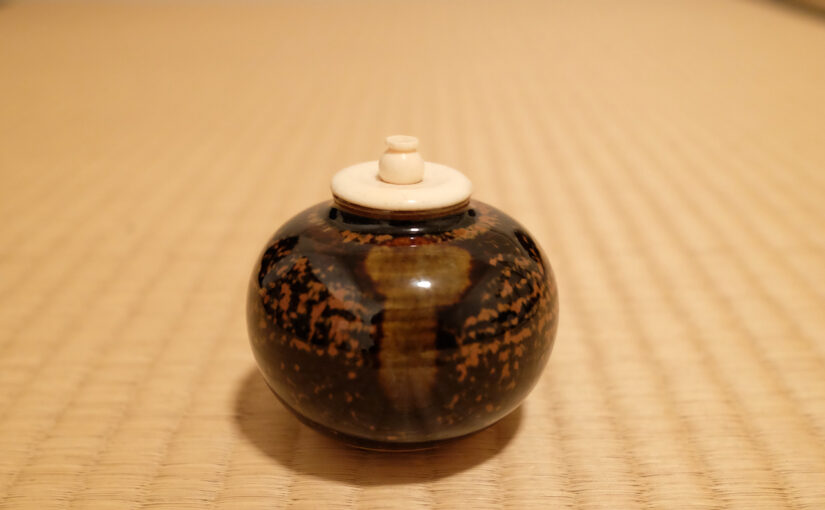How samurais utilized tea utensils during the civil war in 16th-century Japan
A tea caddy: Photo by Author Akemi Sagawa
No, not this one in the photo above. (I use this for my everyday practice.) The real tea caddy in this story is now housed in Seikado Bunko Art Museum in Tokyo, Japan. You can see the photo on their website.
The tea caddy is small enough to hold in a palm. What’s a big deal about this tiny object, you might say. Well, it was really a big deal to possess it in the 16th– century Japan.
Known as “Tsukumo-nasu,” this eggplant-shaped tea caddy was made in the Southern Son-Yuan dynasty in China, 12th – 13th century.
Ashikaga Yoshimitsu 足利義満(1358-1408), the 3rd shogun who built the Golden Pavilion in Kyoto, used to own it. His grandson Ashikaga Yoshimasa足利義政 (1436-1490), the 8th shogun, gave it to one of his subordinates Yamana Masatoyo 山名政豊. One story says that Masatoyo was Yoshimasa’s lover.
It is said that Murata Juko 村田珠光 (1422 – 1503), the person who introduced the “wabi” concept to the tea ceremony, purchased this tea caddy from Yamana Masatoyo.
It is unknown how this tea caddy ended up in the hands of Matsunaga Hisahide 松永久秀 (1508 – 1577), a warlord who was ruling the state of Yamato.
When confronted by Oda Nobunaga 織田信長 (1534 – 1382), a powerful warlord who later became the first unifier of Japan, Hisahide presented this tea caddy as a gift to Nobunaga.
By giving up a little tea caddy, Hisahide saved both his own life and the state he ruled.
Was Oda Nobunaga crazy to forgo the opportunity to grab the whole state in return for the little tea caddy?
